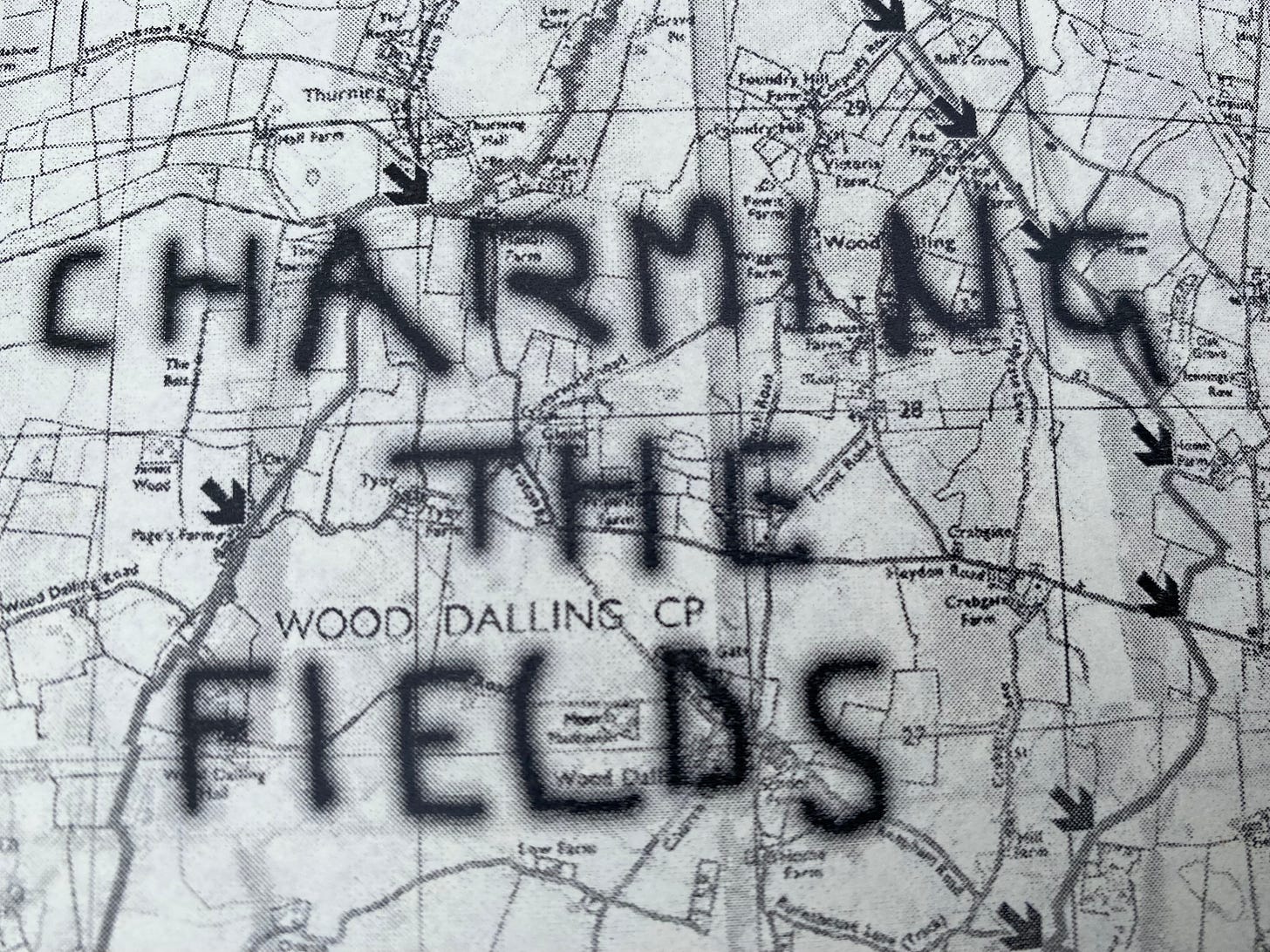Charming the Fields
words and ale and pots and pans
I still have the singing bowl that accompanied me around the parish border in 2007, pictured today outside my cottage, 7 May 2024.
Hello my lovely between the moons friends - here I am, just sneaking into your inbox before the new moon Bracken & Wrack newsletter gets there first.
May is an exuberant month in so many ways, but its arrival always reminds me that Rogationtide will fall within its days.
You may already know all about this church festival, but to summarise what it is - or at least, what it originally was, which is our starting point here - it’s important to realise that the date of Rogationtide changes from year to year. That is because it is set by the date of Easter, which itself varies annually depending on when the full moon falls. Easter Sunday is always the first Sunday after the first full moon after the Spring Equinox, and the three Rogation Days (also called the Minor Rogations as there is a fixed Major Rogation on 25 April) fall on the three days before the Feast of the Ascension which is the 40th day after Easter.
That may look confusing written down, but what it means is that the Rogation Days - and note that they are a magical three in number - are set according to the lunar tides rather than anything that human agency can devise or alter when calendars change. It means, too, that they will always fall during the month of May.
And the Rogation Days, in the Roman Catholic Church (which was what ‘church’ was in medieval times) have always been festival days rooted in the natural world and in the workings of nature. From the earliest times they were days devoted to special prayers for crops.
Arrows show some of the 14 crossing places on Wood Dalling’s boundary.


